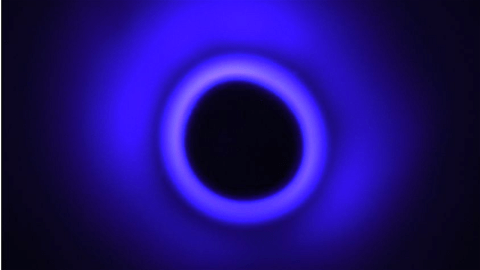Engineers create an “impossible” ring of plasma floating in open air

Caltech researchers managed to pull off a feat of science fiction made real as they created a ring of plasma in open air.
Plasma is one of the four fundamental phases of matter, along with solid, liquid and gas. Plasmas, which you encounter more commonly in St. Elmo’s fire, plasma TVs, neon lights and fluorescent light bulbs, are made up of charged ions and electrons. They do not have any specific shapes and are constrained by their container, when man-made.
The Caltech team, which published a paper on their findings, managed to generate a ring-like plasma shape without a container, as well as develop the ability to maintain it indefinitely. All they needed for the accomplishment, which was previously deemed “impossible” was a thin jet of water and a crystal plate.
Francisco Pereira, a visiting scholar at Caltech, who co-authored the paper with Morteza (Mory) Gharib, put their achievement in perspective:
“We were told by some colleagues this wasn’t even possible,” said Pereira. “But we can create a stable ring and maintain it for as long as we want, no vacuum or magnetic field or anything.”
Here’s a video of the experiment:
The actual experiment consisted of a stream of water thinner than a human hair being blasted from a nozzle into a crystal plate at the speed of around 1,000 feet per second. That’s the same speed as a bullet from a handgun.
As the water jet hits the crystal, it creates a flow of positively charged ions on the negative charged surface. Thus made triboelectric effect causes a flow of electrons to the surface, where they end up ionizing the atoms and molecules in the air. This, in its own turn, generates a donut or torus of glowing plasma which remains stable while the water flows.
The scientists believe that eventual application of their discovery may be in energy storage.
You can find their study here, published in theProceedings of the National Academy of Sciences.




